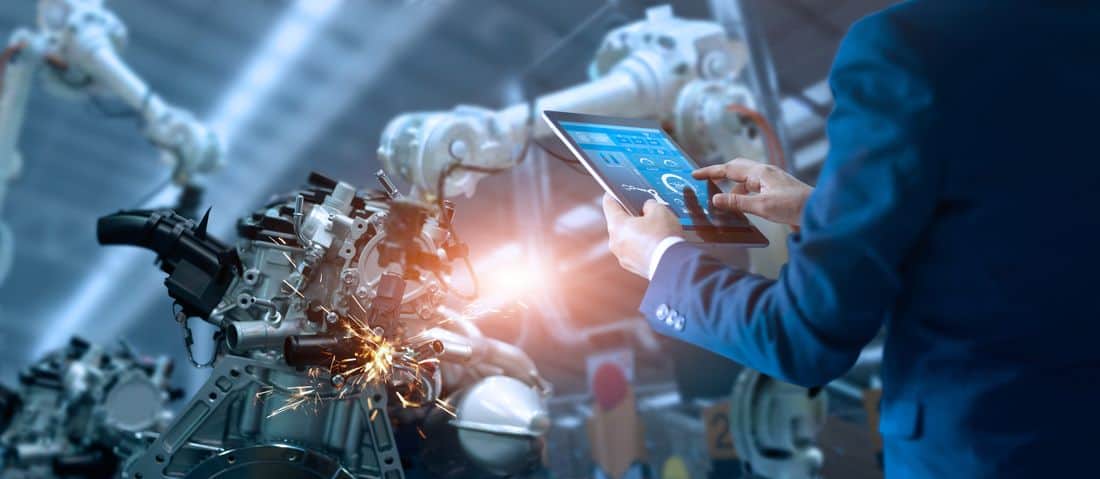Trending News In Robotics In Industries

Robotics have been used in the manufacturing sector for many years and are expanding at a rapid rate.
In fact, the market for robotics has more than doubled since 2013 and the trend shows no signs of slowing down.
One of the main factors contributing to the rapid growth is the need to increase production while bringing down costs. The lack of readily skilled workers and the need to protect the interest of the employees at the manufacturing stations has also fueled the growth in robotics.
Let’s take a look at some robotics trends to keep an eye out for in 2020:
Collaboration Between Humans and Robots (Cobots)
Now, we’re seeing the development of collaborative robots, or known as cobots. These are machines designed to work safely alongside human beings.
Cobots feature software has a wide array of sensors that detect humans in their workspace and automatically stop when a human gets too close. Some of the main areas where cobots are useful include monotonous projects, repetitive tasks, as well as tasks that are highly tedious.
IIoT
The industrial internet of things (IIoT) is not a new topic since it has been a subject of discussion for over two decades now. Now, it has been firmly established in industries and continues to grow in popularity.
One of the main driving forces behind the growth of the IIoT is the low costs of sensor technology. This makes it possible to connect robotics and industrial machinery to software, allowing even greater expansion of technology in manufacturing.
As a result, there’s greater precision, efficiency, and higher production with better connectivity.
Industry 4.0
Another main advantage of connecting industrial robotics to sensors and software is that manufacturers can better analyze and evaluate their production and supply chain. With the data, manufacturers can become more efficient in an ever-competitive business environment.
They can do this by employing lean initiatives, identifying and bringing down the cost of production, and reducing downtime, which is what the Industry 4.0 is all about. Those that started implementing it early on are now reaping the benefits in terms of greater efficiency, higher productivity, and lower costs of production.
Some of the leading industries include the financial sector, the health sector, as well as the retail sector.
Greater Demand for Sensors
Speaking of sensors, companies are now seeing their value in production and connecting robotics to software and will, therefore, continue to invest in them. The sensors will also allow industries to make better use of electricity, saving on costs.
Certain types of sensors and capacitive skins, which can be wrapped around robots, will also allow for more precision tasks. For instance, they can be used in virtual cages. These will be used by machinery to detect humans in the working environment and shut down nearby. This makes the work environment safer when collaborating with robots.
Venturing into Smaller Markets
Introducing machinery and robotics in a plant is hefty and highly expensive. Because of this, it’s the larger companies that tend to introduce robotics. However, smaller companies and businesses are also seeing the benefits of robotics and have started implementing them in their production process as well.
As a result, the small and medium-sized companies enjoy more efficiency, faster production, and greater customer satisfaction due to more precision-driven production. This is a trend that’s still in its infancy stages and is expected to grow over the coming years.
Greater Focus on Logistics
There’s interesting and promising tech on the logistics sector that is being produced every day, such as self-driving trucks, service robots, and intelligent warehouses.
One of the benefits that can be expected from such tech is a higher quality production, storage, and packaging, allowing the cost of production and storage to be significantly brought down.
Take intelligent warehousing, for instance. By automating tasks, businesses are able to save on labor costs. With the ever-increasing cost of labor, this is something that’s welcome by many businesses. Secondly, for the employees working in the warehouses, they’re able to perform tasks more efficiently as they get more work done in a smaller amount of time.
Final Word
At the rate at which technology is advancing, we’re seeing the integration of robotics in many fields, including manufacturing and production. This has benefits for both the company and the consumer.
On one hand, they’re reducing the cost of production, while on the other, they’re ensuring quality and reliable products. The above trends show no signs of slowing down and can be expected to continue for several years into the future.




